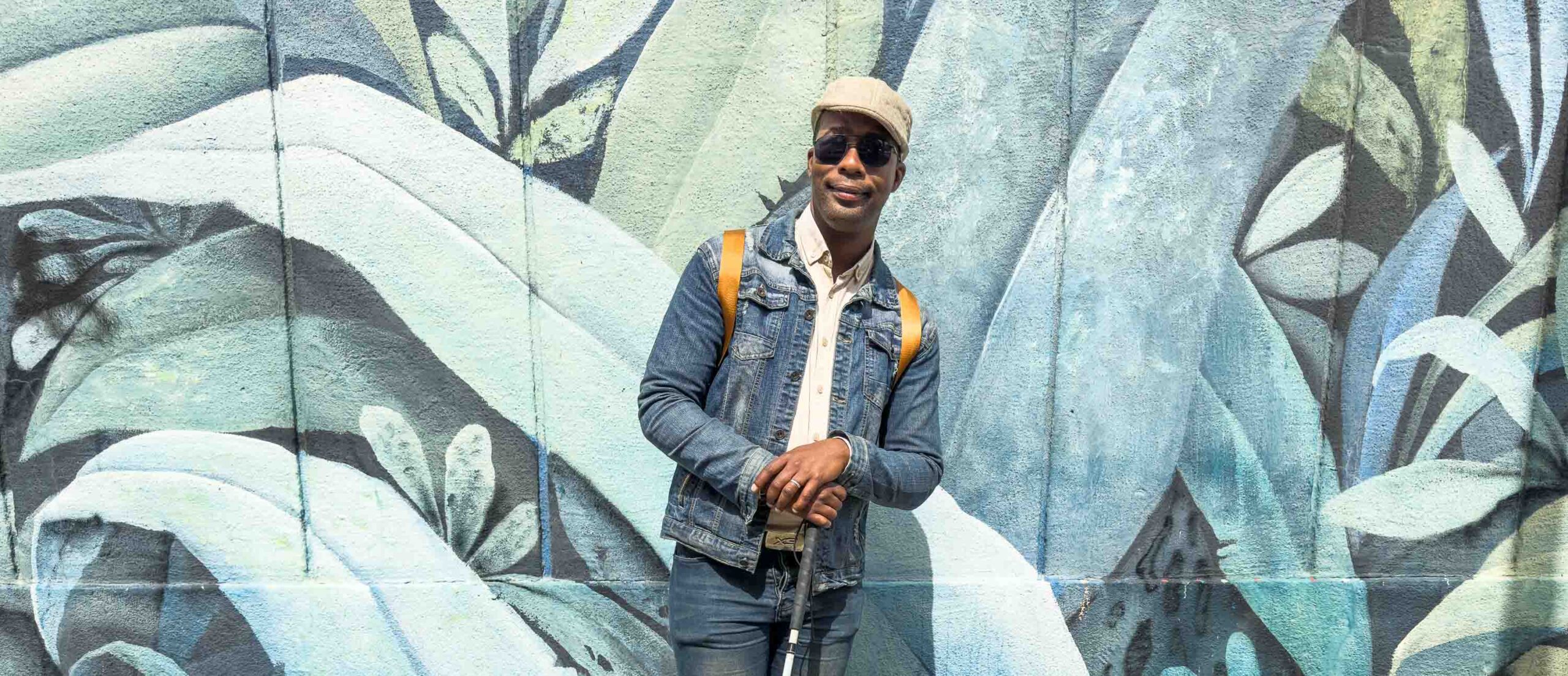Born partially sighted then completely blind by the age of 13, Nqabohlanga ‘Winston’ Fani had never considered becoming a tour guide. But the pandemic forced him to rethink his future, and thanks to the Backabuddy fund and Cape Town Tourism, what seemed unattainable became a reality. Travel writer Julia D’Orazio joins him on his street art tour.
I’m standing outside the Cape Town Society of the Blind (CTSB), in its namesake city. It’s not a typical place of interest; away from the tourist fanfare of the V&A Waterfront and amid factories in Salt River, a former industrial district just east of the CBD (Central Business District). Then again, who I’m about to meet is also not your typical guide.
Nqabohlanga ‘Winston’ Fani is South Africa’s first qualified blind tour guide. Born with glaucoma, Winston’s developing eye disease resulted in him becoming completely blind by the age of 13. As for employment, tour guiding was not on Winston’s radar. But everything changed when he lost his call center role during the COVID-19 pandemic, leaving him desperate to find work.
“Being a man, born with an ego, it was not sitting well, finding myself in that situation [of unemployment],” Winston tells me as we start walking away from CTSB to discover Cape Town’s urban masterpieces, “so I had to jump at any opportunity.”
Once the industrial and textile heart of the wider Western Cape province, Salt River has undergone a vibrant makeover in recent years with new restaurants, breweries, community events, and urban art emerging on the scene. Since 2017, the annual International Public Arts Festival (IPAF) spearheaded by street art digital platform Baz-Art, has been transforming the city’s blank walls.
And particularly in Salt River, one of few Cape Town suburbs that escaped forced removals during Apartheid, and where subversive and protest art has always had its place. Today, artworks on social commentary, ranging from vaccinations to the digital age, are a permanent feature, created by local and international artists including South Africa’s Grant Jurius and Brookyln-based artist Sara Erenthal.
As part of the Limitless movement, braille touchpoints and QR codes to audio guides of Winston’s curations have been installed at many of the city’s artworks to allow people of all abilities to understand each mural, each artist. The plaques form part of Cape Town’s mission to make it an accessible destination for all.
“I can take people through my way of seeing things.” Winston says as we arrive at our first mural, pulling in his walking stick to rest upon. “Art is powerful. Look at everyone. What do you see, different people, different races…”
I finish his sentence, “They’re working together to build the world.”
“Exactly,” Winston enthusiastically nods as we face a poignant mural depicting inclusivity, people of all backgrounds, all abilities equipped with gardening tools, united for one common purpose: To plant a communal garden.
Back on the streets, we walk to one of Winston’s favorite murals. Titled ‘T for Digit’ by South African contemporary artist Dekor One, the six-meter-high mural depicts a man in a military uniform. His head is a globe that floats above his broad shoulders; behind him, an orange ‘T’ with objects that could be interpreted as missiles or pens. While the artwork aims to shed light on both the benefits and challenges of the digital world we live in, Winston sees a more profound, personal message.
“The smaller you think, the smaller your world,” he tells me. “The broader you think, the bigger the world. I became the first blind tour guide because I stepped outside my comfort zone.”
“The man is ready to fight for what he believes in, because he thinks big,” he adds.
Yes, Winston, you certainly do.
**
The writer was a guest of South African Tourism and traveled with AWOL Tours for this experience at her expense.

